HOW TO SWIM FASTER EASIER? (LEARNING TO STREAMLINE YOUR BODY)
Want to know the simple answer to swimming faster and easier? Learn to swim slowly with correct technique.
This counter-intuitive approach is the secret to reducing your body's drag and increasing your propulsion. It's also the hardest skill you'll have to master on your journey to effortless swimming, as it requires patience over power. Most swimmers resist the idea, but once they embrace it, their progress skyrockets.
This guide will walk you through why this "slow is fast" philosophy works and how it lays the foundation for a powerful, efficient stroke.
In This Article: The "Slow is Fast" Philosophy
- The In-Pool Challenge: A Test for Your Technique
- Why Slowing Down is Like Learning a New Skill
- The Physics of Effortless Swimming: Conquering Drag
- Overcoming the Mental Hurdle: Patience is Key
- What's Next: Building Your Streamlined Stroke
- Frequently Asked Questions
The In-Pool Challenge: A Test for Your Technique
Before you read on, I have a small exercise for you. Next time you are in the pool, try this and see for yourself that I'm not just pulling your leg.
While swimming your normal laps, slow everything down to a slow-motion-like movement without changing your body position. See what happens.
More than likely, you will find it very difficult to stay afloat at that speed. This reveals a critical secret: many swimmers unknowingly use speed to compensate for a poor body position.
Think of the person who jumps in and thrashes at the water as fast as they can, only to be out of breath at the other end. They aren't strong; they are inefficient. They can't stay afloat unless they fight the water, and that's exactly what we want to fix.
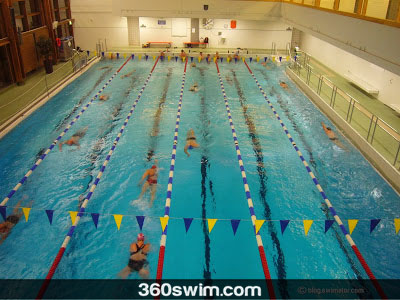
Why Slowing Down is Like Learning a New Skill
There are a few reasons why we want to initially slow down. Let's say you are learning how to tie your shoes. If someone shows you at their regular speed, you won't grasp the movements.
However, if they take the time to show you each movement in slow motion, you are more likely to understand and remember the process. You practice it slowly until the movements become natural. Once that pattern is imprinted into your motor skills, you can tie your shoes at lightning speed without even thinking about it.
Swimming is exactly the same. When you slow down, you give your brain a chance to process and learn the proper streamlined body position, arm movement, head position, and catch.
The Physics of Effortless Swimming: Conquering Drag
If you don't learn the fundamentals at a slow speed, your body will produce too much drag and turbulence as you move through the water. This makes swimming a much harder activity than it needs to be.
Remember, water is about 800 times denser than air, so moving through it requires a thoughtful, streamlined approach.
My goal is to teach you how to save energy by perfecting your streamline. When you do this, you become the efficient swimmer who glides effortlessly through the pool, rather than the one fighting the water.
Overcoming the Mental Hurdle: Patience is Key
Now, are you with me here, or are you still thinking I am nuts?
I won’t lie to you: slowing down to learn proper technique takes immense patience. Your mind will constantly tempt you to go faster. You might feel like you aren't getting a good workout or are wasting your valuable time.
However, if you are serious about becoming a faster, more efficient swimmer, I challenge you to bear with me and embrace the slow process.
What's Next: Building Your Streamlined Stroke
In the next articles, I will take you through a set of exercises (phases) which will help you build up your stroke and save valuable energy during your swims. Whether you are doing laps in the pool or stroking away in the open water, the "slow down" approach is a must.
Frequently Asked Questions
What is the single best way to swim faster and easier?
The best way is to first learn to swim slowly with perfect technique. This focuses on creating a streamlined body position, which dramatically reduces water resistance (drag) and allows you to swim much more efficiently.
Why do I need to swim slower to get faster?
Swimming slowly allows your brain and muscles to learn the correct movements without the pressure of speed. It helps build muscle memory for proper form, which is impossible to develop when you are just thrashing through the water.
What is streamlining in swimming?
Streamlining means shaping your body to cut through the water with the least possible resistance. This involves maintaining a straight, horizontal line from your head, through your hips, to your toes, minimizing the drag that slows you down.
What is the biggest mistake beginners make when trying to swim faster?
The most common mistake is using brute force and high speed to compensate for a poor body position. This creates massive drag and leads to quick exhaustion without any improvement in efficiency.
How do I know if I have a bad body position?
Try this test: swim your normal stroke in slow-motion. If your legs sink or you struggle to stay afloat, it's a clear sign that you are relying on speed, not proper technique, to keep your body horizontal in the water.
 LNURL1DP68GURN8GHJ7URP0YHRXD3SWDMKJMFWVDHK6TMVDE6HYMRS9A4HSCNCWFXSH3NN0H
LNURL1DP68GURN8GHJ7URP0YHRXD3SWDMKJMFWVDHK6TMVDE6HYMRS9A4HSCNCWFXSH3NN0H
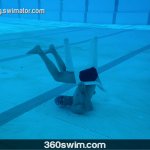
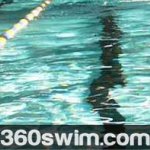
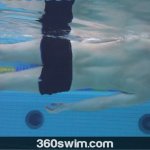


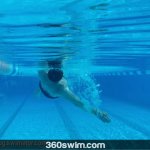
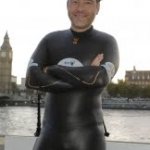




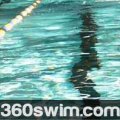
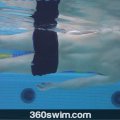


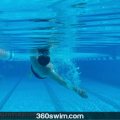
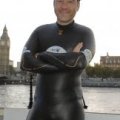
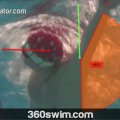
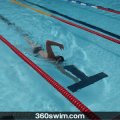












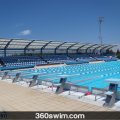

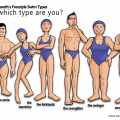




Comments (10)
---------------------------------
Now, on the subject, I due recognized the importance of floating on water before ''swimming''. Practicing the ''dead log''---> adjusting your upper body (arms, chest) and your lower body (legs, etc.) are must as you said. Then, comes the floating and before you know it, you start moving your legs and your arms to ''push'' the water in the opposite direction to where you want to go.
---------------------------------
Nonetheless, as you said it in this article, to compensate our inability to float well, we swim as fast as we can and if you are not correctly breathing air while swimming (inhale the air by turning your head on the side)well, you quickly miss air and stop in your track.
-----------------------------------
I)My question is: how do you inhale air properly?
- When I swim, it is as if I had to swim as fast as I can or else, I going to miss air because I do not take air properly while swimming...
-----------------------------------
II)How to float in the deep part of the pool? (at least 3,8 meter)
-Today,during my swimming lessons, I wore a ''floating belt'' if I may say so and I dived in the deep side of the pool. I immediately sank and could not swim at the surface. I was exhaling air by making bubbles, I moved my arms, but I presume my legs weren't following. Then, I panicked because I was missing air and I felt desperate and powerless.
-----------------------------------
To answer your question:
1) how do I inhale properly? - You need to take a deep breath and see your chest rise when you take it. I find that many people struggle with exactly this. They try to take a breath, but it is a breath via stomach breathing and not chest breathing. So, inhale to see your chest rise. This will make sure you get enough air in your lungs to float.
If you start blowing bubbles, you are releasing the air and thus you will start sinking, so hold your breath during your floating exercises.
2) How to float in deep end of the pool? - there is no difference between floating in shallow end and deep end. The water is the same and if you learn how to float in the shallow end you'll be able to do this in the deep end.
I know this doesn't really explain much in terms of floating or breathing in detail, but it seems to me that you need to learn how to relax in the water by doing a few simple sinking exercises. I will put some videos for you and add a post here soon. stay tuned.
I have followed your first tip which turned out to be great. Nonetheless, I am still learning how to maintain myself on the surface of the water (without necessary floating on the stomach or the back)to then be able to maintain my head out of the water in the deep end. Hum... I don't know if you know what I mean...
p.s.: Sorry for all the mistakes I made in my last post. I wrote so quickly that I did not take the time to correct it...
I am not too clear on your question, however, when you mentioned 'keeping your head out of the water' it sounds a red alarm :). Head out of the water is only in the case of breathing which is only like 10% of your time spent swimming. The rest of the time, your head should be under water, so you can float easier with little or no effort.
Also, when you mention having a problem with balance. Many beginners have issues with the feeling of tipping over. Try to fight this feeling and don't try correct your position on the water. Your body is like a boat, it rocks back and forth, but it will not tip, so not need to tighten all your muscles to try to keep yourself straight.
If I were to identify my problem, I would say that I am expending way too much energy as I swim, but I don't know how I am doing it or how to relax and expend less.
I am teaching myself how to swim and am currently not taking lessons. Thank you for reading my post.
That said, fast kick conditioning is always good :). Especially when done in a vertical position in a deep end of the pool.
I just started taking swimming classes.In my second class deadlog should be performed.
I tried many times I could float my feet but the problem is I am getting carried away to the left side.It happened all the times.
Please suggest me some tips.